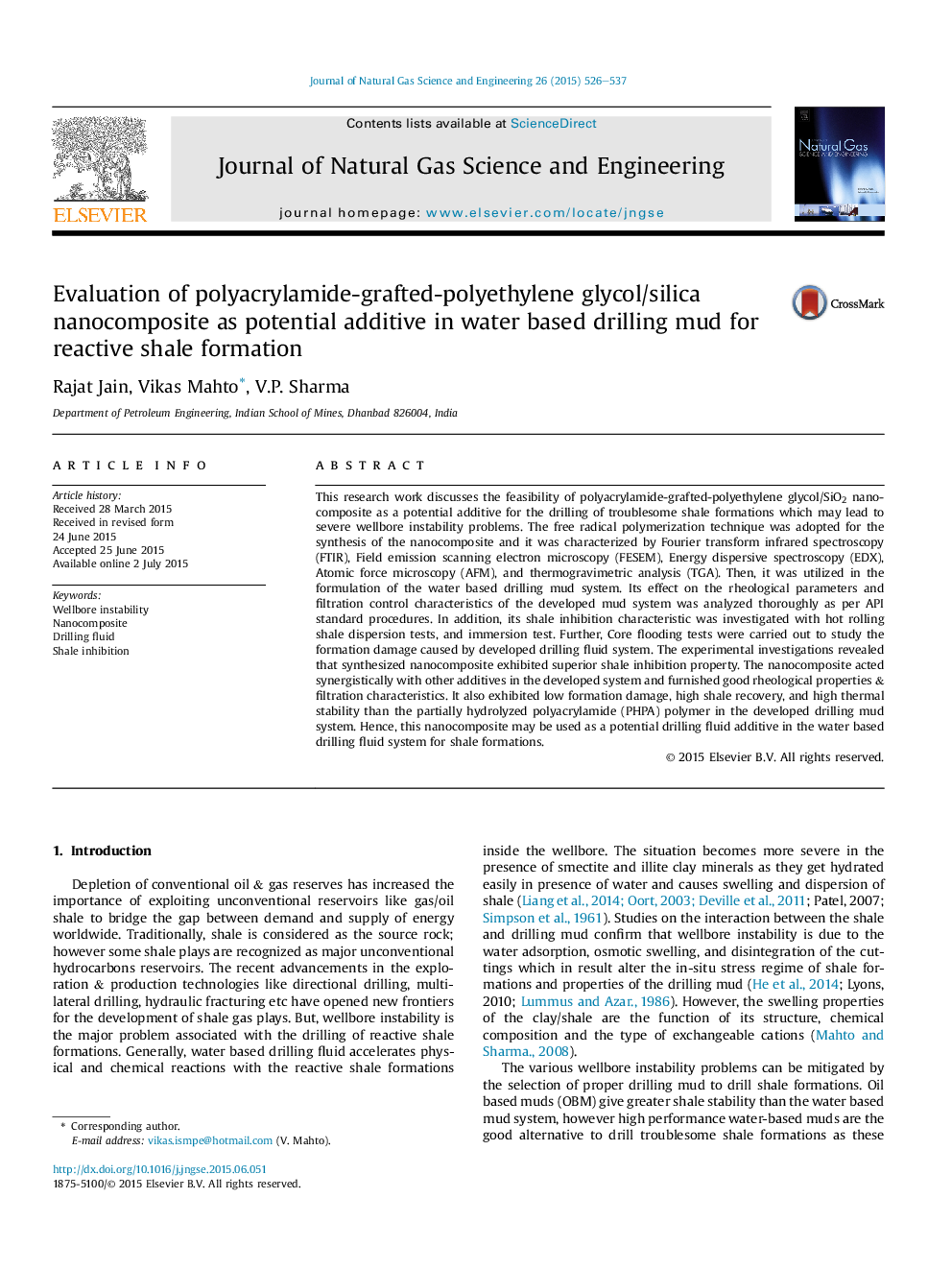| Article ID | Journal | Published Year | Pages | File Type |
|---|---|---|---|---|
| 1757544 | Journal of Natural Gas Science and Engineering | 2015 | 12 Pages |
•Polyacrylamide-g-polyethylene glycol/silica nanocomposite was synthesized.•Nanocomposite was used as a drilling fluid additive for shale formations.•Nanocomposite had good effect on rheological properties of drilling fluid system.•Nanocomposite had better shale inhibition property than PHPA polymer.•Nanocomposite may mitigate wellbore instability problems.
This research work discusses the feasibility of polyacrylamide-grafted-polyethylene glycol/SiO2 nanocomposite as a potential additive for the drilling of troublesome shale formations which may lead to severe wellbore instability problems. The free radical polymerization technique was adopted for the synthesis of the nanocomposite and it was characterized by Fourier transform infrared spectroscopy (FTIR), Field emission scanning electron microscopy (FESEM), Energy dispersive spectroscopy (EDX), Atomic force microscopy (AFM), and thermogravimetric analysis (TGA). Then, it was utilized in the formulation of the water based drilling mud system. Its effect on the rheological parameters and filtration control characteristics of the developed mud system was analyzed thoroughly as per API standard procedures. In addition, its shale inhibition characteristic was investigated with hot rolling shale dispersion tests, and immersion test. Further, Core flooding tests were carried out to study the formation damage caused by developed drilling fluid system. The experimental investigations revealed that synthesized nanocomposite exhibited superior shale inhibition property. The nanocomposite acted synergistically with other additives in the developed system and furnished good rheological properties & filtration characteristics. It also exhibited low formation damage, high shale recovery, and high thermal stability than the partially hydrolyzed polyacrylamide (PHPA) polymer in the developed drilling mud system. Hence, this nanocomposite may be used as a potential drilling fluid additive in the water based drilling fluid system for shale formations.
